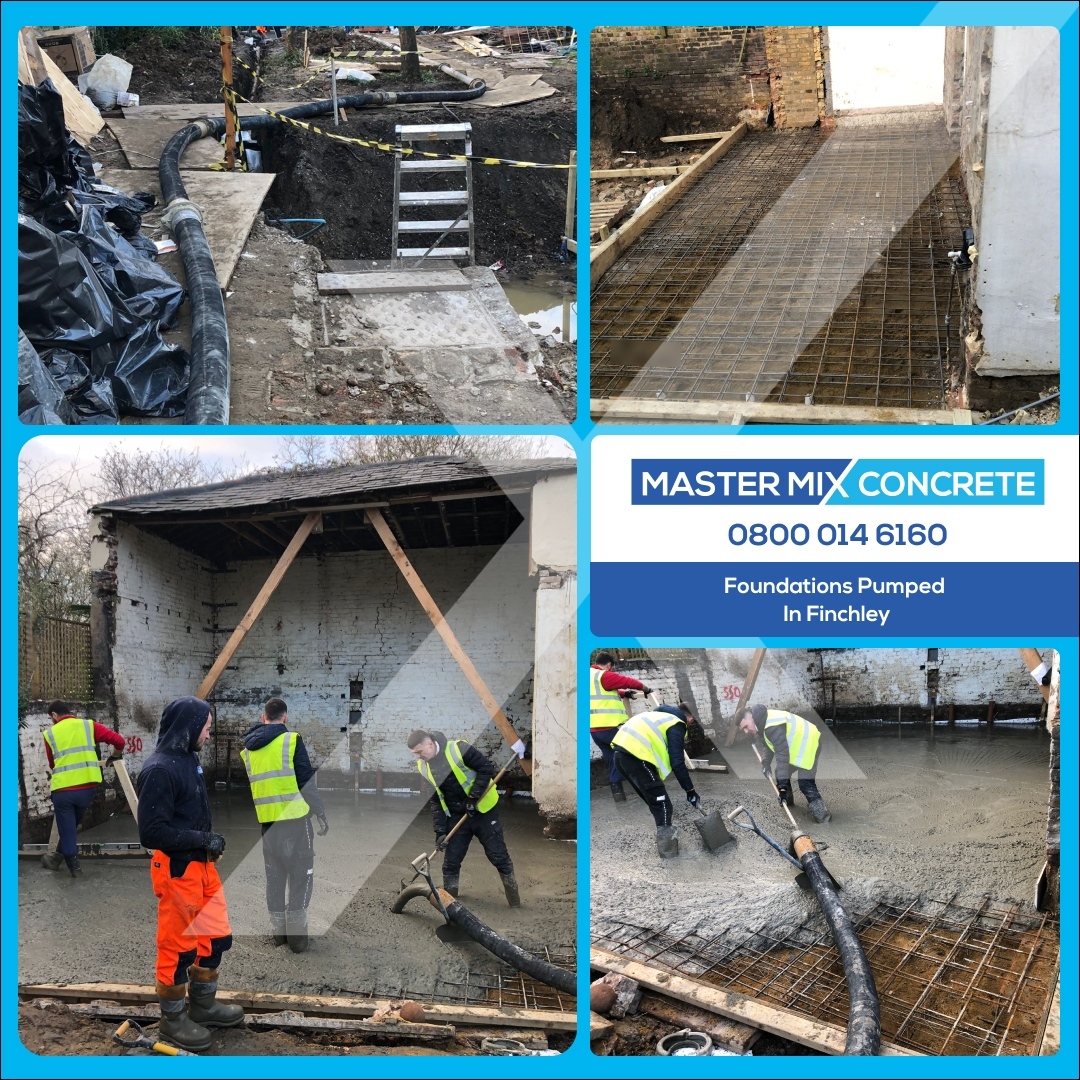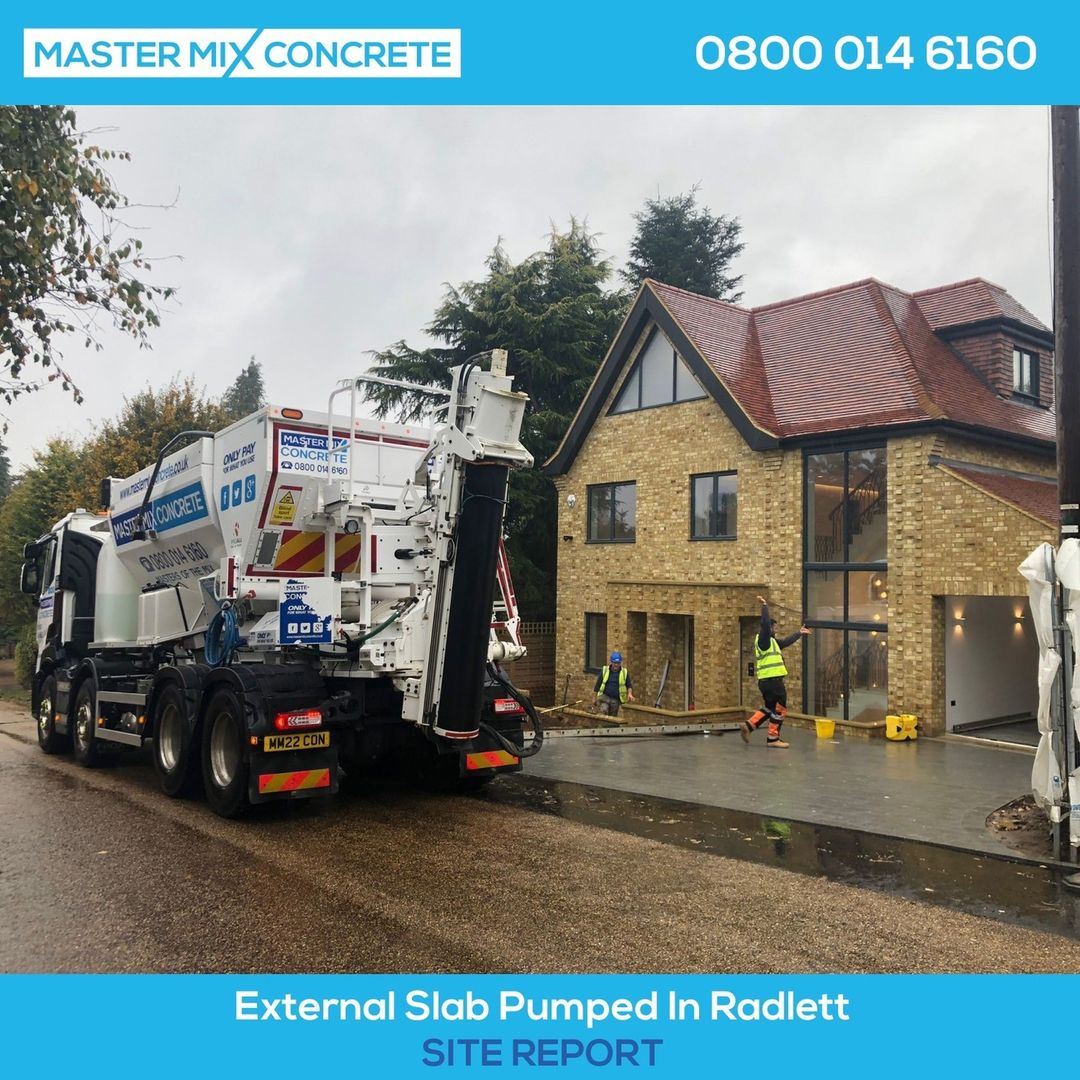We can’t always trust the weather forecast! A sudden downpour of rain is enough to make even the most experienced building contractor rethink pouring concrete.
As ready mix concrete suppliers in London, we’re all too familiar with unpredictable weather conditions when pouring concrete, but there are ways to protect your project from excess water successfully.
Read on to find out how to protect concrete from rain.
HOW DOES RAIN AFFECT CONCRETE?
Rain falling on top of freshly laid concrete can damage the surface and compromise a level and floated finish. Even worse, if too much extra water works its way into the concrete mix, it can alter the carefully proportioned water-cement ratio, disrupt the curing process and result in weak concrete overall – every concrete contractor’s nightmare.
For this reason, it’s important when pouring concrete in the rain to never lay the concrete onto wet surfaces or trenches filled with water if there’s a risk that the water may mix into the concrete.
The concrete mixture can often displace the rain water, pushing it upwards and out of the cavity into rainwater pools. Don’t try to ‘soak up’ the rain water with the concrete or dry cement, or work it into a freshly laid surface as this excess water will compromise the concrete mix and diminish the top layer.
How rainwater will affect concrete depends on the stage in the curing and pouring process that was reached before the rain set in. If the concrete is still fresh (around 2-4 hours after pouring), it’s important to cover the surface to protect it.
How long does concrete take to dry after rain?
Once the concrete has been finished (between 4-8 hours after pouring) and has set hard enough for walking on, the effects of rain should be minimal. The curing process is a chemical reaction, with ready mix concrete taking up to 28 days to fully cure. However, as long as you let your fresh concrete cure under waterproof covers with good drainage for a minimum of 4-8 hours, this should be sufficient to prevent damage.


HOW CAN I PROTECT CONCRETE WHEN IT RAINS?
If bad weather is forecast or you’re pouring concrete in the rain, your first step should be to ensure the work site is properly covered with a plastic sheet covering. It’s worth keeping the necessary equipment to hand as a precaution during the rainy season. Protect small slabs from rainwater using plastic sheeting, or use temporary shelters made with large tarps and timber to ensure rainwater doesn’t damage bigger areas.
Before you start the pour, ensure that any cavities are free from water, and keep them covered as much as possible. If it started raining before you could cover the slab, don’t panic. Simply wait until the rain has passed, then pull or push any surface water off the edge of the slab surface before finishing.
This is sometimes done by sliding a garden hose across the surface of the slab, wiping away the surface water.
WHAT HAPPENS IF IT RAINS WHILE POURING CONCRETE?
If there’s heavy rain expected, try to be prepared and cover the pour site effectively with a large tarp to prevent rain getting on to the freshly poured concrete.
However, sometimes even when you’ve taken all the precautions possible, you can get caught out, particularly if it rains straight after you’ve poured the concrete. If this happens, try to protect as much of the surface as possible using plastic sheets and timber to create a temporary shelter over the pour.
Concrete should never be poured on top of very wet surfaces, as this will significantly compromise the concrete pour. Good drainage is essential to prevent rainwater pool in trenches dug for footings, foundations and slabs.
Once the rain passes, move onto the steps below.

HOW CAN I TELL IF RAIN HAS DAMAGED THE CONCRETE?
Once the rain stops, it’s time to assess any potential damage to the concrete (and check the weather forecast for any more drizzle!).
Obvious defects should be easy to see during a visual survey – check for surface scaling (flaking or peeling) and abrasion resistance can be tested with a simple scratch test using a screwdriver and comparing the result to other areas of concrete known to be of good quality. Look for areas which are a softer consistency or have a dusty or powdery surface.
Craze cracking is another issue that can be identified visually after excess rain water has evaporated, although it may be aggravated by freeze thaw cycles later in the lifespan of the concrete. Look for fine, random cracks or fissures on the surface of the concrete.
Surface damage may be easy to repair using some extra concrete.
However, if areas of a thin slab are compromised, removing the rain damaged concrete layer and replacing full-depth sections may be better by pouring fresh concrete again.
If you require any additional concrete to make repairs, contact us to arrange your order, with same or next day deliveries available. Check out our areas here.

TOP TIPS FOR POURING CONCRETE IN THE RAIN
-
Plan ahead:
Check the weather forecast on the day of your concrete pour. If heavy rain is expected, it may be best to reschedule if you’re pouring independently, or ask your concrete contractor how they will ensure rain doesn’t reach the work site.
-
Check the weather:
If rain is forecast, make sure you have plastic sheets or waterproof materials available to cover the concrete.
-
Know your site:
Check that the surfaces you are pouring onto are dry before you begin pouring concrete. Never pour concrete into water-filled cavities or wet surfaces from which the water cannot be displaced and escape. Keep an eye out for gutters, downspouts and cavities that may overhang your site and pour water onto the wet concrete surface.
-
Assess the situation:
After the storm or if you’ve had to continue pouring concrete in the rain, conduct an assessment of any damage to the new pour and act promptly to carry out repairs (if necessary).
Always consult with your main building contractor…
… or call the friendly Master Mix Concrete team for further advice.
- ANY SIZE
ORDER - FREE NO
OBLIGATION QUOTES - ONLY PAY FOR
WHAT YOU USE - SAME DAY/
NEXT DAY DELIVERY
AREAS WE COVER
We deliver concrete of any size order to Watford and the
surrounding areas. We promise fast, same or next day deliveries and
an efficient service every time.
